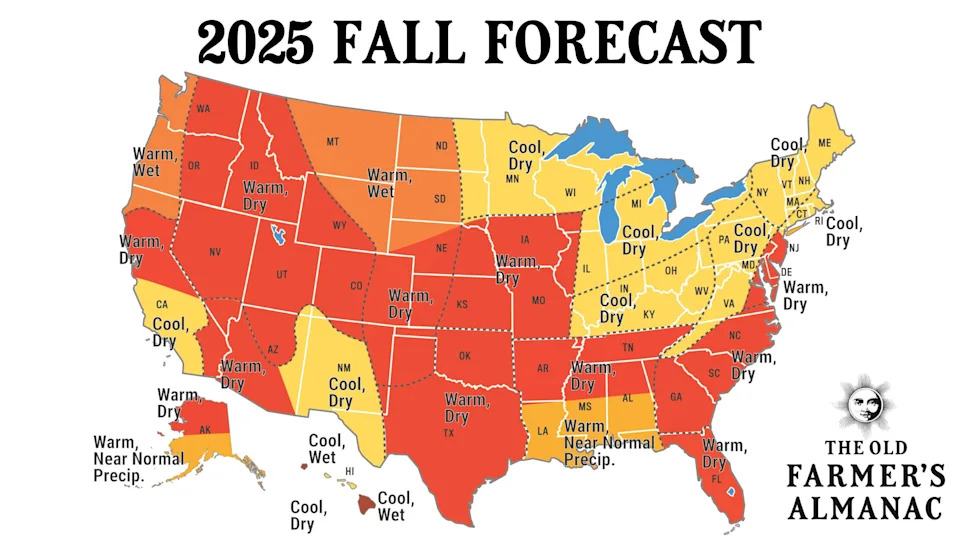Sometimes an open Atlantic storm is just an open Atlantic storm.
In fact, that’s true the majority of the time. Of the approximately 1,300 named storms that have developed in the Atlantic, Gulf, or Caribbean since 1900, about 400 went on to make landfall as a tropical storm or hurricane somewhere along the continental U.S. coastline.
That leaves about two-thirds of storms as someone else’s problem, or my personal preference, no one’s problem.
➤ Weather alerts via text: Sign up to get updates about current storms and weather events by location
Hurricane news: Get the latest hurricane updates and how communities are preparing, responding, and recovering.
Point being, while the average season has three to five tropical storm and one to two hurricane landfalls in the continental U.S., a given storm is less likely than not to strike land.
That’s particularly true for cyclones developing in the Tropical Atlantic east of the Lesser Antilles, where formation is common in August and September but only around 1-in-5 of those systems will ever be a U.S. threat.
Tropical Storm Erin is not going to beat those odds, despite what you may have read this week from purveyors of unnecessary drama such as Uncle Frank’s Xtreme Weather Basement, Florida Clout Chaserz, or Gulf Coast Hurricane/Monster Jam First ALERT.
Where is Erin now and where is the future hurricane heading?
As of late Wednesday morning, Erin is about 1,200 miles east of the northern Leeward Islands, moving a touch south of due west at 15 to 20 miles per hour. Erin’s maximum sustained winds remain near 45 mph, little changed since it developed on Monday.
Thus far, tepid sea surface temperatures and nearby dry air have kept Erin’s development prospects under arrest like a Charles Entertainment Cheese accused of financial fraud. However, while thunderstorm activity associated with Erin remains limited today, as its well-organized circulation moves west-northwest into warmer waters over the next day or two, low shear and sufficient moisture should allow it to start strengthening in earnest.
By Saturday, Erin will likely be the first hurricane of the 2025 season as it passes a few hundred miles north of the northeastern Lesser Antilles, and may well reach Category 3 strength on Sunday or Monday as it moves north of Puerto Rico.
These islands will not experience the worst of Erin, but could see intermittent bands of gusty showers between Saturday and Monday, along with high seas.
Spaghetti models for Tropical Storm Erin
Only a 5% chance that a hurricane Erin becomes a U.S. threat, but East Coast could see rip currents
Erin’s path next week looks increasingly clear.
As the storm reaches the western edge of a ridge of high pressure in the central Atlantic, it will turn north toward a dip in the jet stream over eastern Canada starting on Monday, pass near or west of Bermuda around Aug. 20 as a major hurricane, then accelerate northeast.
There is a strong model consensus for this steering pattern, which should keep Erin’s center well east of the U.S. East Coast.
This isn’t a situation where Erin could “miss” the trough that will bend its path northward; even if the storm is farther south and west than predicted in the medium term, it’ll turn north once the ridge to its north weakens.
That means the already slim chances of Erin posing eventual U.S. landfall risks are narrowing further.
At the start of the week, I put those odds at a little over 10%; now, with the steering pattern forecast firming up, I’d say there’s a 5% (or lower) possibility of Erin threatening the continental U.S. next week.
While we don’t know exactly how far offshore Erin will pass and there is uncertainty in precisely what the steering winds will be in 7 days, forecasts of the jet stream pattern are reliable at this range and show no sign of major changes afoot.
Thus, Erin will cause heavy surf and rip currents along the Eastern Seaboard starting mid-next week, but nothing in the way of rain, surge, or wind.
Satellite view of Tropical Storm Erin
When a real threat looms: WeatherTiger has your back
Elsewhere, the tropics are mostly quiet. A disturbance crossing the Yucatan Peninsula will spread some moisture from northern Mexico to central Texas Friday and Saturday, though development is improbable before it moves inland.
Otherwise, I’d guess that one more tropical wave may develop at some point over the next 12 days in the central or eastern tropical Atlantic based on generally favorable environmental conditions, but there’s nothing specific to watch at this time.
Assuming Erin behaves itself, it’s a well-timed reminder that the historical peak of hurricane season is just beginning.
Over 80% of U.S. major hurricane landfalls occur between Aug. 15 and Oct. 15, so the ripple of Erin agita should prompt you to ensure your hurricane kit and evacuation plans are in place.
Erin also gives you a valuable opportunity to evaluate how your sources of hurricane information frame their reporting. If your sources were running around like Mike the Headless Chicken (a real 1940s carnival act who survived decapitation and could perform basic functions like eating, breathing, comparing tropical waves to Irma, and posting the 384-hour GFS “for awareness”) hyping up a non-existent Florida threat from Erin, I’d recommend you find less emotional, more scientific sources for the rest of the year.
Hurricane season is bad enough without gross exaggeration for clicks.
I view my most important job as making sure you have the lead time necessary to be optimally prepared for the surge, wind, rain, and tornado hazards from tropical cyclones, especially high-impact major storms.
The flip side is that for my heads-up to mean anything, there can’t be five false alarms for every actual threat.
I don’t show model runs from the world of pure imagination beyond a week out because they are just scary, not skillful or useful, and I have no interest in scaring you.
Hurricane season is a marathon made up of discrete sprints. Discretion is the better part of valor, and though Erin should be a formidable hurricane next week, it isn’t cause for concern, much less a sprint. We don’t need to do that to ourselves, even as we keep watching the skies.

Dr. Ryan Truchelut is chief meteorologist at WeatherTiger, a Tallahassee company providing forensic meteorology expert witness services and agricultural and hurricane forecasting subscriptions. Visit weathertiger.com to learn more. Email Truchelut at [email protected].
This article originally appeared on Tallahassee Democrat: Tropical Storm Erin forecast: Only a 5% threat to Florida, East Coast








Comments